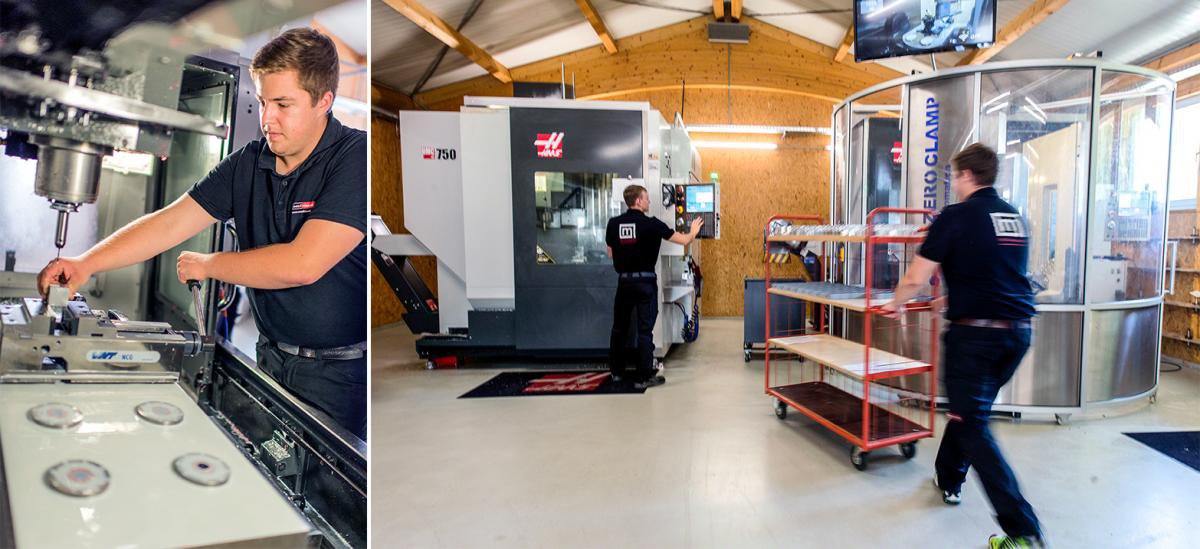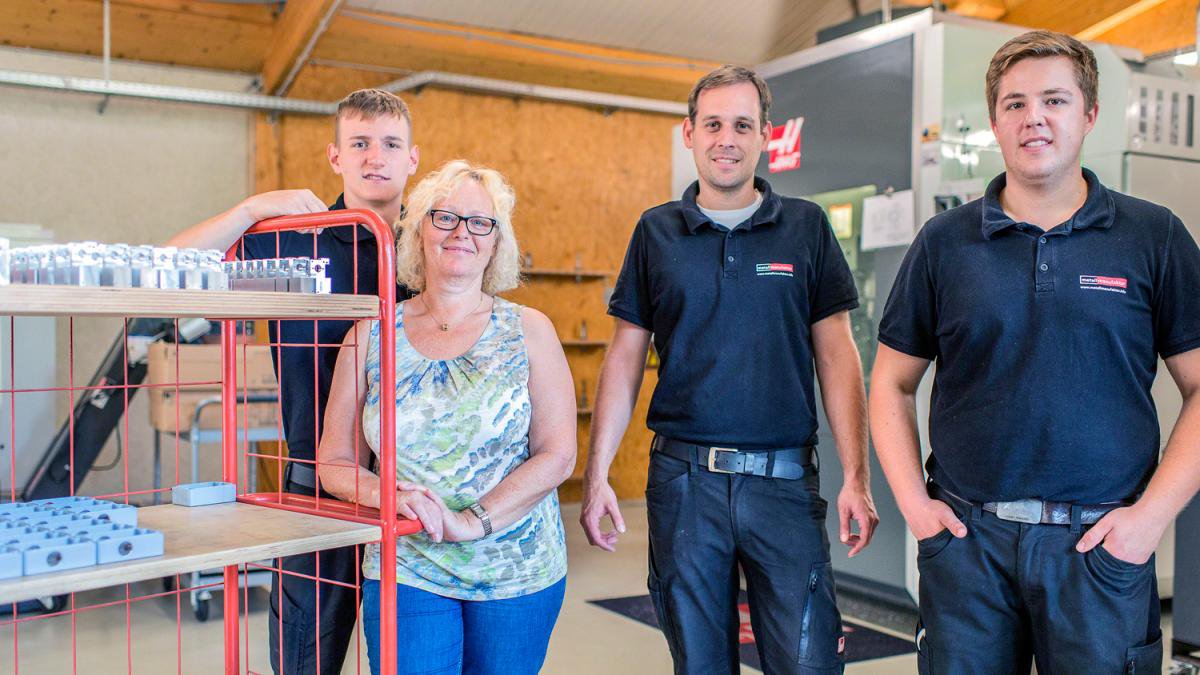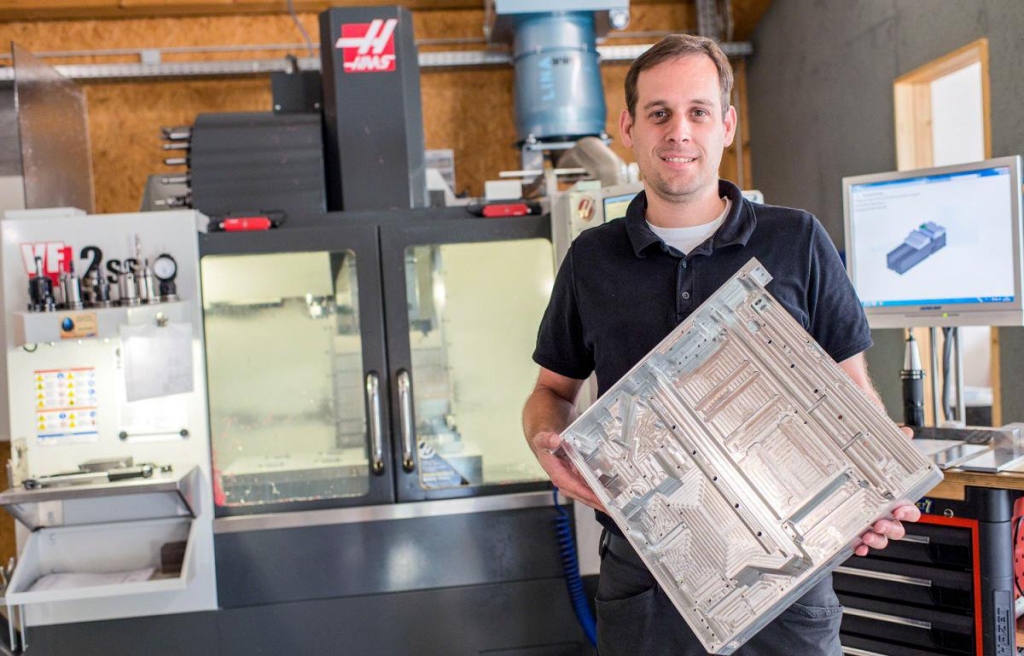Metallmanufaktur GmbH
Based in the south of Germany, Metallmanufaktur GmbH has come a long way in a short time. From a standing start in 2013, when the company found early business by simply cold-calling potential customers, Metallmanufaktur now serves a variety of different industries. Investing only in Haas CNC machine tools, including automated five-axis and high-speed models, the firm has thrived, and has recently entered an agreement with local Haas Factory Outlet (HFO) Katzenmeier to be a regional Haas showroom.

In 2013, Jochen Schumacher’s dream of running his own business became reality with the establishment of Metallmanufaktur GmbH in Orsingen-Nenzingen, Germany, 130 kilometers south of Stuttgart, close to the Swiss border. Although not an obvious location for a machine shop, the company has been able to fill a small but lucrative niche for a reliable, fast, cost-effective subcontract machine shop – something the area was lacking.
“We started in 2013 with a Haas VF-2SS Super-Speed CNC vertical machining centre, and a Haas UMC-750 five-axis universal machining centre,” explains Mr. Schumacher, who first heard about Haas in his previous role as head of the mechanical production department at medical technology specialists, Leica Biosystems, near Heidelberg.
“Although I never had the opportunity to buy Haas technology during my time at Leica, I always said that if I were to ever start my own business, I was going to do it with Haas machines.”
In the very beginning, Mr. Schumacher had to cold-call potential customers to secure business for Metallmanufaktur. He would use the Internet to research trade fair exhibitors whose products and parts might be a good match for his capabilities. Happily, cold-calling is no longer required – new customers now find him, typically through word-of-mouth recommendations. Fresh contacts are added almost every week, which has allowed Metallmanufaktur to expand into a neighbouring building.

In early 2015, Metallmanufaktur agreed to become a Haas Factory Outlet (HFO) showroom for regional Haas distributor, Katzenmeier.
“There was nowhere south of Stuttgart where it was possible to demonstrate the potential of Haas machines,” says Mr. Schumacher. “So, after discussions with Bernd Katzenmeier, CEO of Haas Factory Outlet Sueddeutschland, and Jens Thing, managing director of Haas Automation Europe, it was decided that here would be a good location. We had around 220 people attend the grand opening of the showroom earlier this year: a mixture of existing and potential Haas customers. Of course, having all of those engineering companies come and see the Haas machines on our premises is also good for us. It’s great networking!”
A short time before the grand opening, a second Haas UMC-750 five-axis universal machining centre was acquired by Metallmanufaktur in March 2015, this time, fitted with an automated loading system.
“The idea was to purchase a machine that could run unsupervised the whole day, through the night, or at weekends. It’s difficult to find fully trained and qualified personnel in this area,” explains Mr. Schumacher.
Parts produced on this machine include 200-off batches of industrial metrology components, and similar quantities of parts used on garbage collection trucks – all loaded automatically and completed on the Haas UMC five-axis machine in a single setup. When a part is finished, the door opens and a robot arm extends inside the working envelope before lifting the part from its fixture. The gripping device then rotates 180° and deposits a fresh blank in its place, before exiting. Chip-to-chip time is around 30 seconds.

As an HFO regional showroom, Metallmanufaktur keeps demonstration machines on-site, including a Haas Super Mini Mill and an ST-20Y CNC turning centre with Y-axis capability.
Although the company currently out-sources any turning operations, the plan is to bring turning in-house. For now, however, Metallmanufaktur is focussed on prismatic parts, machined from all types of metals and plastics. For instance, the company produces around 180 different components (from various materials) for special hospital beds designed for overweight patients.
The Haas VF-2SS Super-Speed CNC vertical machining centre owned by Metallmanufaktur also plays an important role. The machine’s 12,000-rpm spindle and fast rapids ensure Metallmanufaktur can be competitive on all job types. For example, in early 2015, the VF-2SS was used to successfully complete a series of 30,000 relatively simple parts featuring a large number of holes.
Anything complex is, of course, is assigned to one of the UMC-750 five-axis machines. A case in point are batches of 60 aluminium chassis parts for a German manufacturer of workholding and gripping systems. Machined from solid to tight tolerances, each component demands around 3½ hours of machining time.
To simplify job scheduling and programming, the Haas machining centres at Metallmanufaktur are configured identically, using zero-point workholding systems, and the same type of cutting tools in corresponding stations in the toolchangers. On average, changeover times at Metallmanufaktur are just 5 to 10 minutes, with parts fully interchangeable between machines.
“The moment I differentiate between machines, I lose flexibility,” concludes Mr. Schumacher. “From a process and technical perspective, our operation is nearly perfect now. This is important because, aside from price and delivery, we need to show customers that we have the best offer for all industries, an offer that is based on Haas technology. And just because we are relatively small, doesn’t mean we can’t compete. We’re as lean and competitive as any company.”




